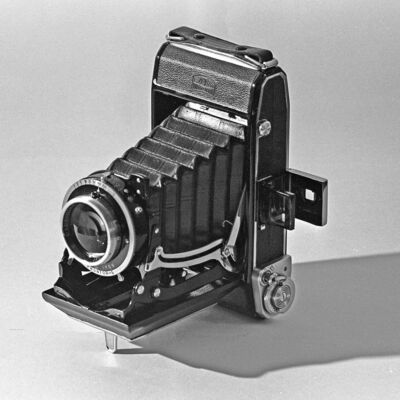Manzanar: A controversial part of our nation's history
Apr 23, 2023 01:46:30 #
This past January, my wife and I met some friends in Lone Pine, California, located up in the Owens Valley region of the state. This was the first time I had been there and I took advantage of that to visit the Manzanar National Historic Site, dedicated to the memory of when it was one of 10 War Relocation Centers where individuals of Japanese ancestry were interned for the duration of World War II. In total, these camps were home to over 120,000 people.
Now this has special meaning for me as one of my first bosses after I graduated from engineering school was of Japanese decent. He was born in Los Angeles and his family ran a truck garden, supplying vegetables to local markets and restaurants. His parents were born in Japan, but Paul and his older brother, were born in LA.
Now Paul never talked much about what happen back then, but I knew a few things. I knew that he was in high school when the war started and that he and his family were forced to leave Los Angeles as part of the displacement of Japanese-American families. I also know that he eventually joined the Army and served in the 442nd Infantry Regiment, which consisted of mostly Americans of Japanese ancestry. This unit served in Europe and was the most decorated regiment in the army. Paul was wounded twice while fighting in France and Germany.
Because of this, I had always wanted to visit Manzanar as it's the only one of the 10 camps where the government has tried to preserve any of its history.
For the next few posts, I'm going to present some of the photos I took that day and at the end, I'm going to relate a bit more information about my old boss and what happened to his family.
Now this has special meaning for me as one of my first bosses after I graduated from engineering school was of Japanese decent. He was born in Los Angeles and his family ran a truck garden, supplying vegetables to local markets and restaurants. His parents were born in Japan, but Paul and his older brother, were born in LA.
Now Paul never talked much about what happen back then, but I knew a few things. I knew that he was in high school when the war started and that he and his family were forced to leave Los Angeles as part of the displacement of Japanese-American families. I also know that he eventually joined the Army and served in the 442nd Infantry Regiment, which consisted of mostly Americans of Japanese ancestry. This unit served in Europe and was the most decorated regiment in the army. Paul was wounded twice while fighting in France and Germany.
Because of this, I had always wanted to visit Manzanar as it's the only one of the 10 camps where the government has tried to preserve any of its history.
For the next few posts, I'm going to present some of the photos I took that day and at the end, I'm going to relate a bit more information about my old boss and what happened to his family.
The sign at the entrance of the historical site - January 2023 - Sony a6500, 18-135mm
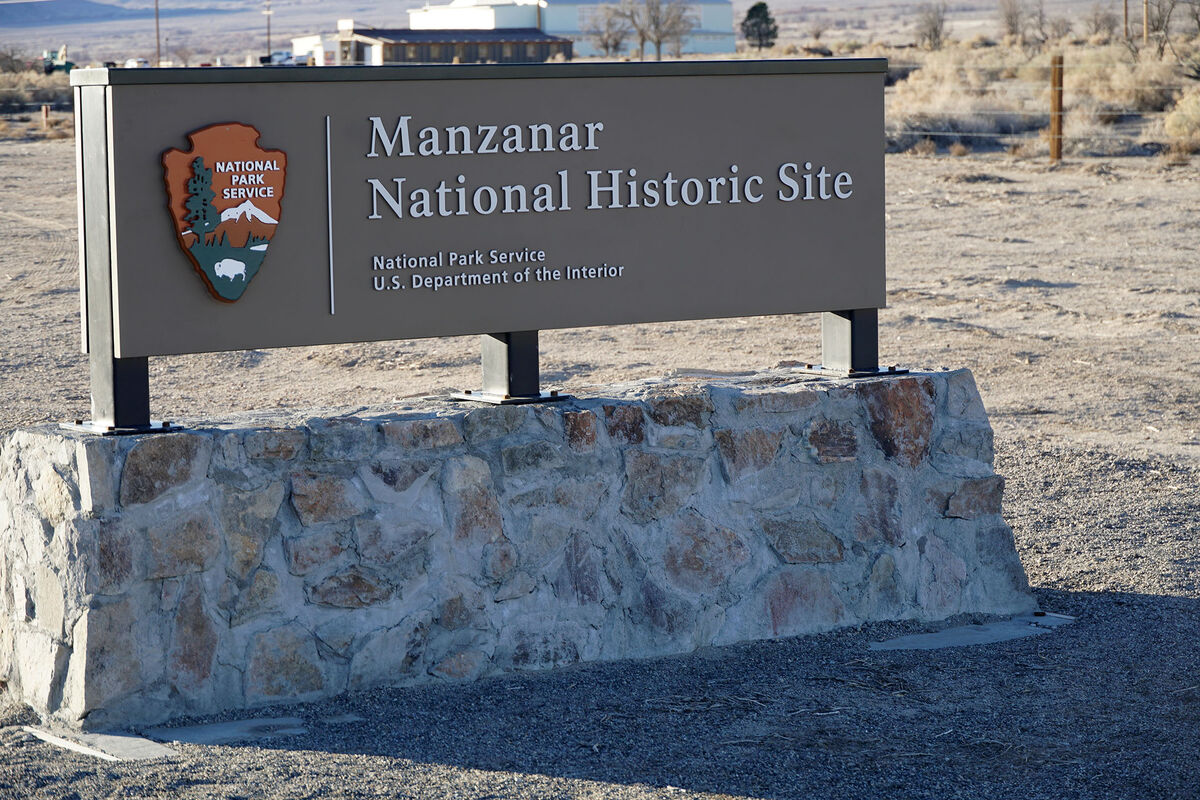
This image gives you and idea of what the area looks like. Note that the two low, wooden buildings are the only two reconstructed barracks on the site - January 2023 - Sony a6500, 18-135mm
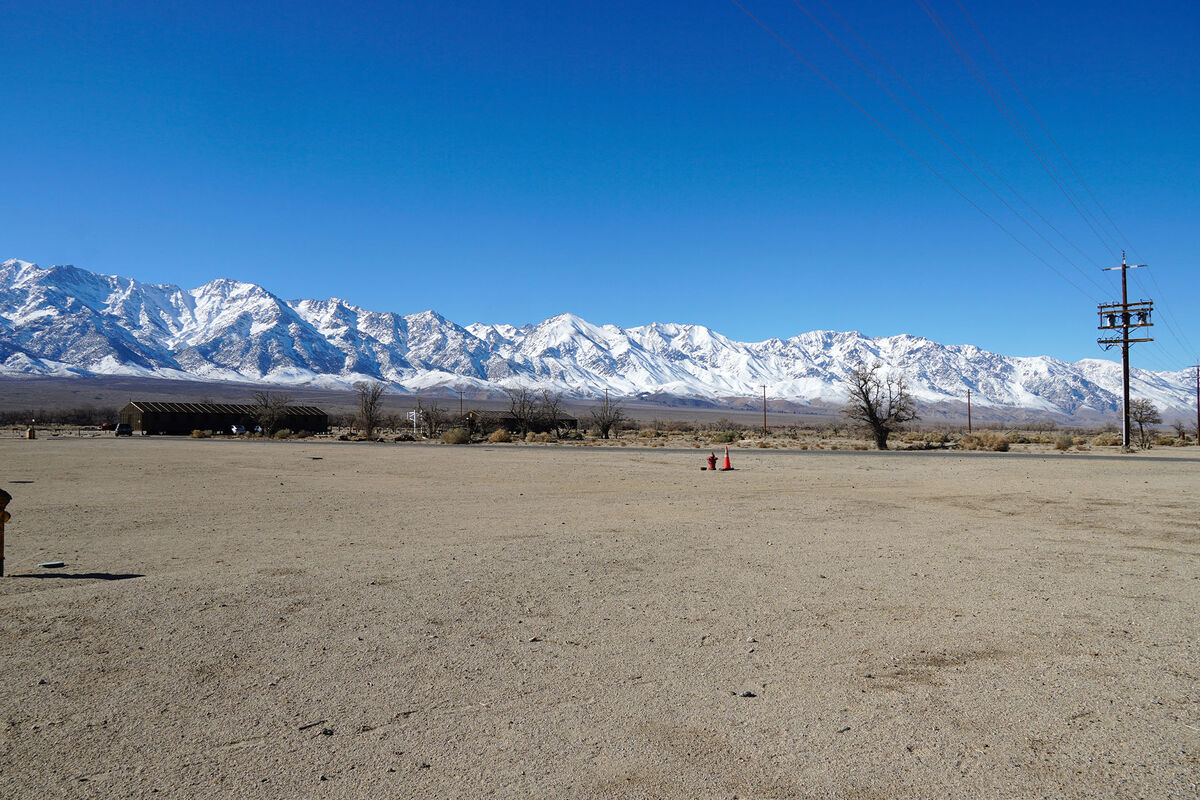
This shows the site plan of the camp at its height, when more than 10,000 internees were living here - January 2023 - Sony a6500, 10-18mm
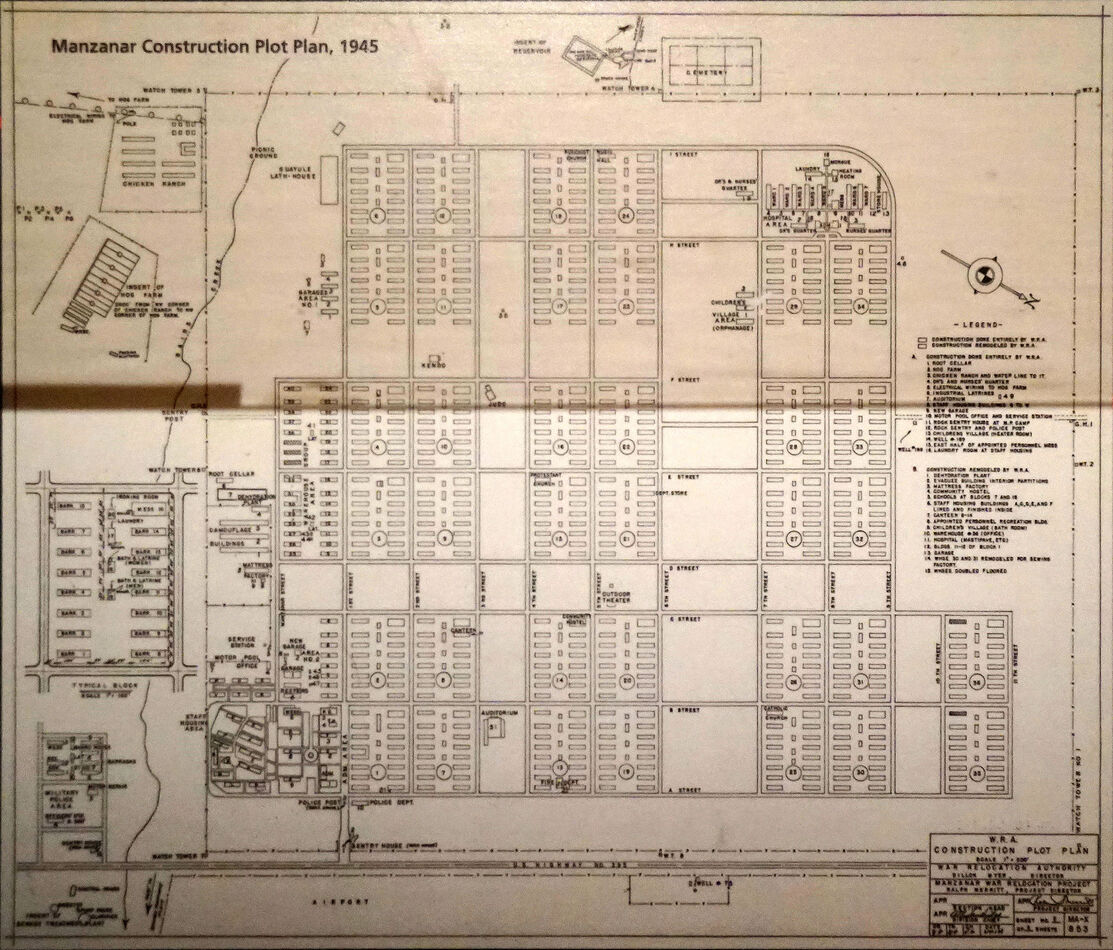
And this is a picture of a portion of the model of the camp that's on display at the museum - January 2023 - Sony a6500, 10-18mm
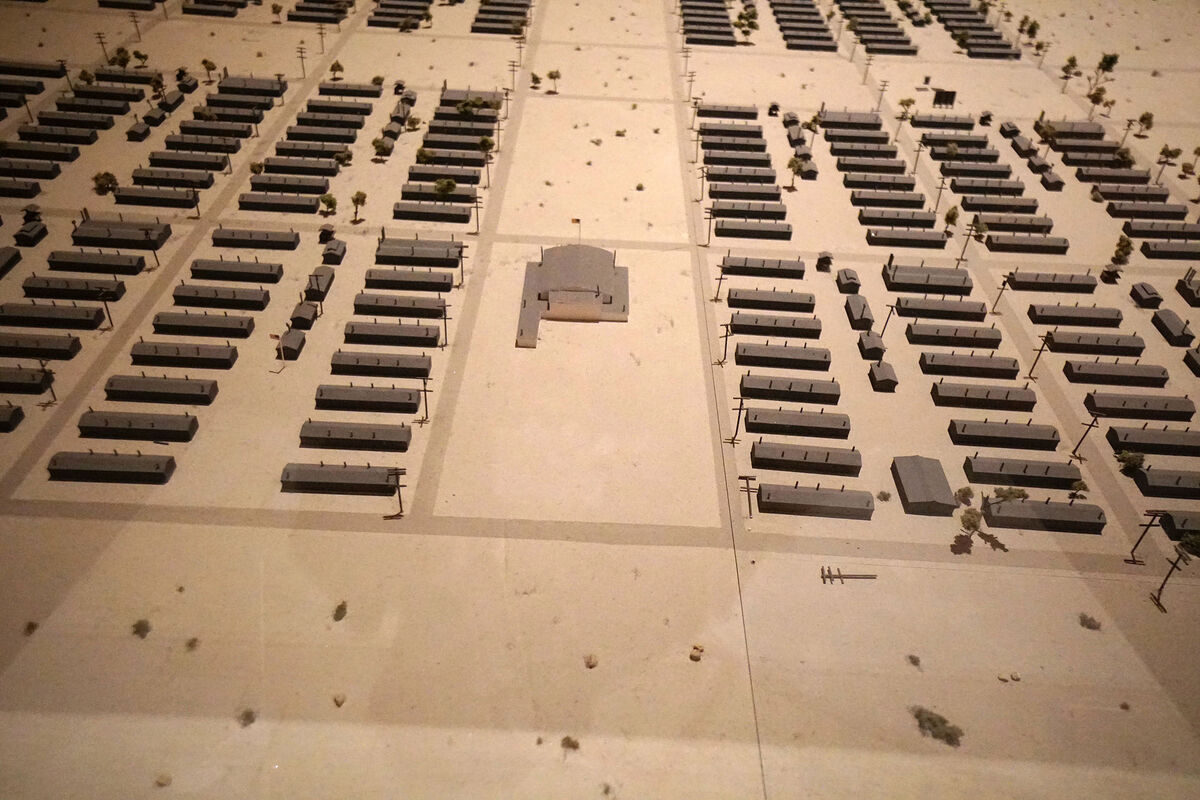
A recreation showing a typical room where a family lived. While the camp was built by the Army Corp of Engineers and private contractors, it turns out that most of the furniture was produced by internee craftsmen - January 2023 - Sony a6500, 10-18mm
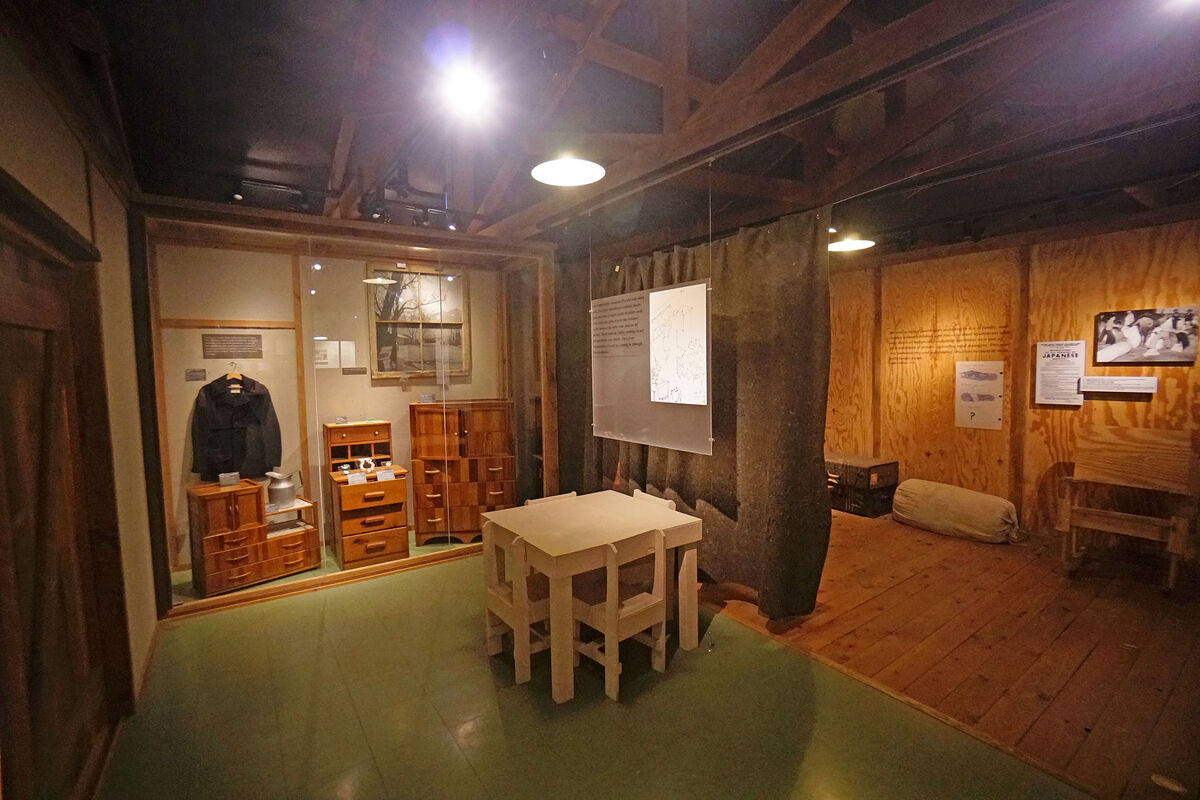
This is one of the two reconstructed barracks on the site. This type of building was used for both housing families as well as schools and medical facilities as well as some of the shops and stores - January 2023 - Sony a6500, 18-135mm
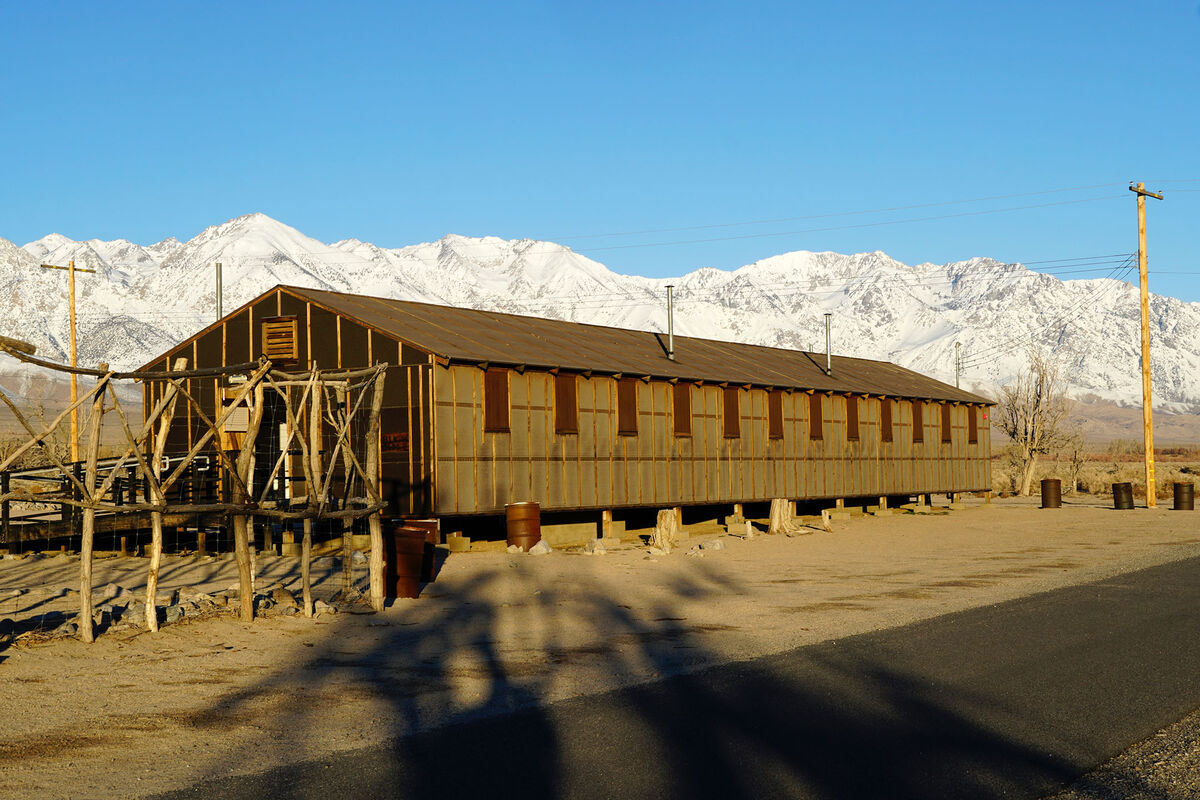
This depicts what one of the classrooms looked like where internee children attended school. Again, most of the furniture was manufacture by internees - January 2023 - Sony a6500, 10-18mm
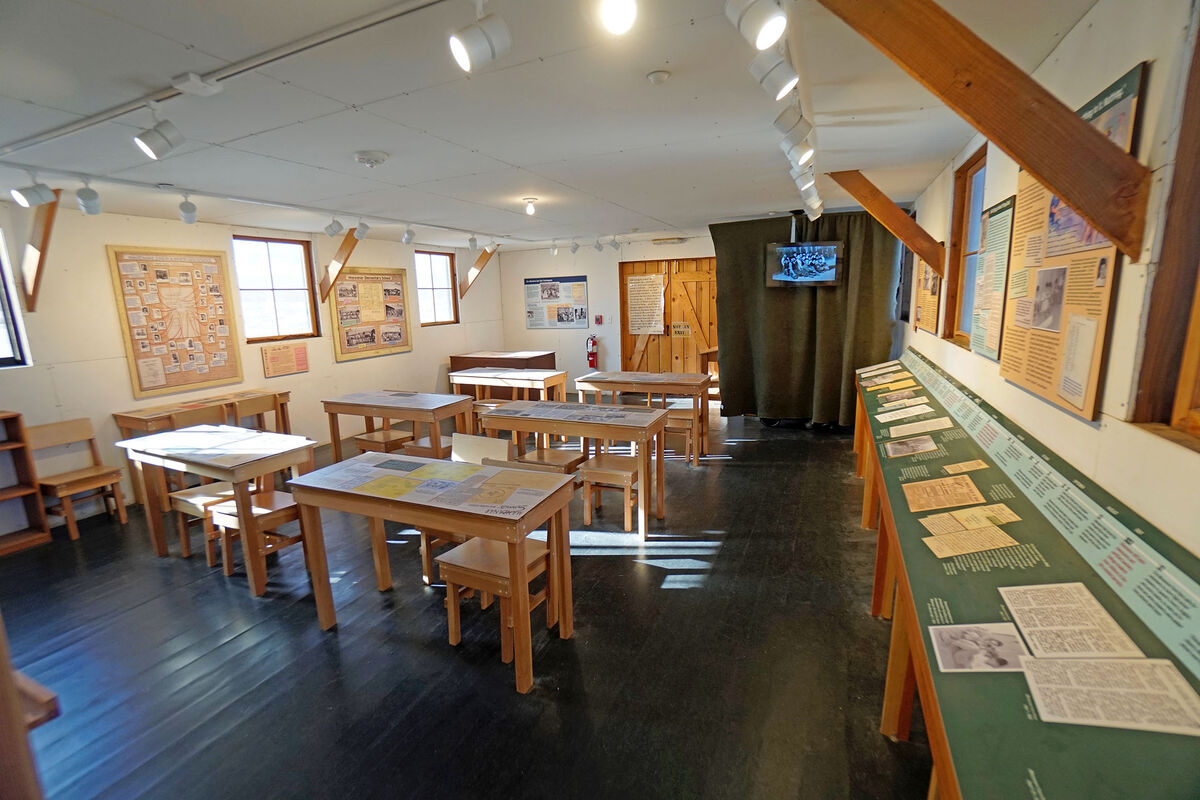
Apr 23, 2023 02:24:58 #
And now some more images of the Manzanar Historical Site. In a couple of the images below, you'll see a camera and a display of photos. One of the Japanese internees, a man named Toyo Miyatake, owned a photo studio and camera store in Los Angeles before the war. When he and his family was notified that they were being moved to Manzanar, Toyo hid a lens and shutter mechanism in their luggage as well as some sheet film holders. Once he was at the camp, he built a camera out of wood, using these parts, and camouflaged it as a lunch box. He befriended a couple of the civilian employees at the camp and they smuggled film and chemicals in for him. Note that once the camp opened, the Army ordered that no photos were to be taken, even by Army personnel or civilian employees, basically because they didn't want outsiders to see what the camp looked like or the conditions there, which actually wasn't all that bad because the internees made it as livable as possible, growing gardens and landscaping the housing areas and the schools. The Army did make one propaganda film which was highly staged but it did serve to document much of what the internees had managed to accomplish, but there was no still photos allowed. That eventually changed a couple of years into the war when the camp's director became aware of what Mr. Miyatake had been doing. They came to an agreement that as long as there was no attempt to smuggle the photos out of the camp or give them to someone who would give them to the newspapers, he would allow him to continue to take his pictures. It seems the camp director didn't agree with the no-photo order because he felt that no matter what was going on outside the camp, that it was a tragedy that none of this was going to be preserved for history. He even allowed Yoyo to open a studio and to document life in the camp. If it had not been for Mr. Miyatake, there would have been virtually no photographic record of what life was like in this or any other camp.
I thought that this story would be of particular interest to the photographers here. Note that one of the LA area PBS stations a few years ago did a story about Mr. Miyatake and his work here and they interviewed his grandson who has the original camera that his grandfather made and used in the camp.
I thought that this story would be of particular interest to the photographers here. Note that one of the LA area PBS stations a few years ago did a story about Mr. Miyatake and his work here and they interviewed his grandson who has the original camera that his grandfather made and used in the camp.
This is a replica of Mr. Miyatake's hand made camera - January 2023 - Sony a6500, 10-18mm
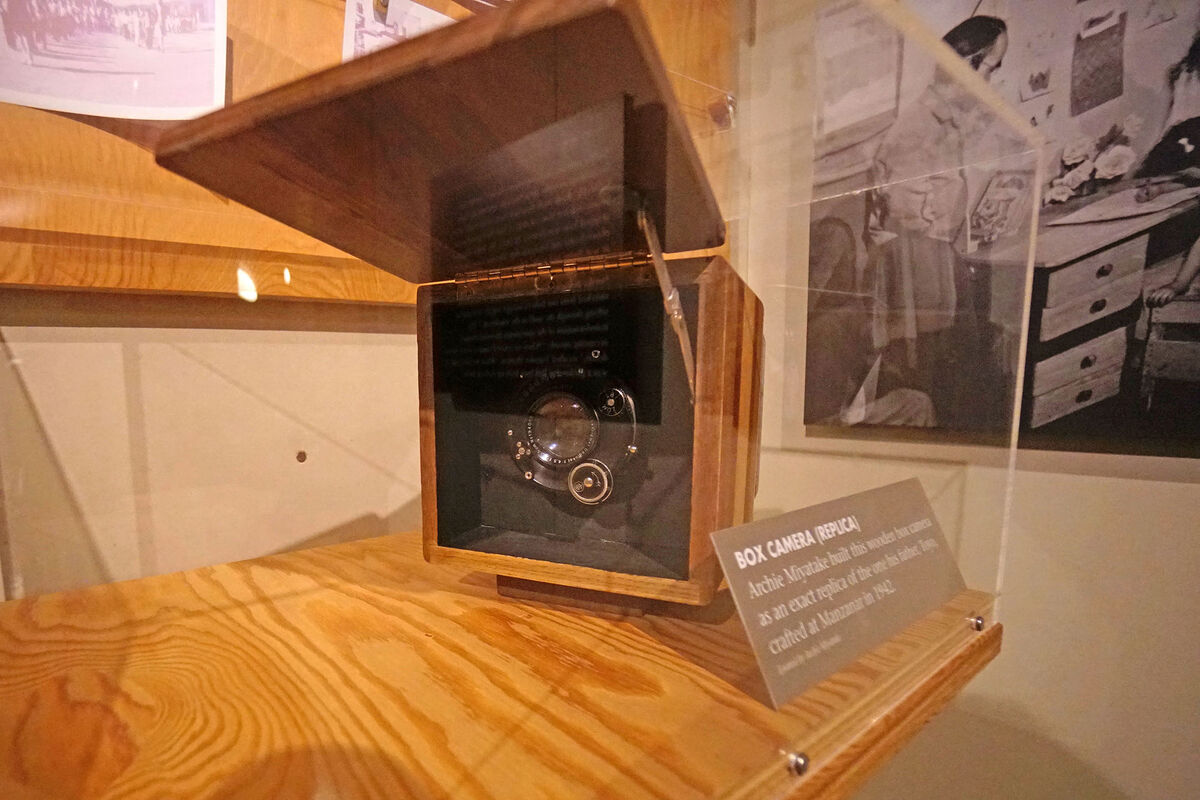
And here is a short stroy about this camera and Mr. Miyatake - January 2023 - Sony a6500, 10-18mm
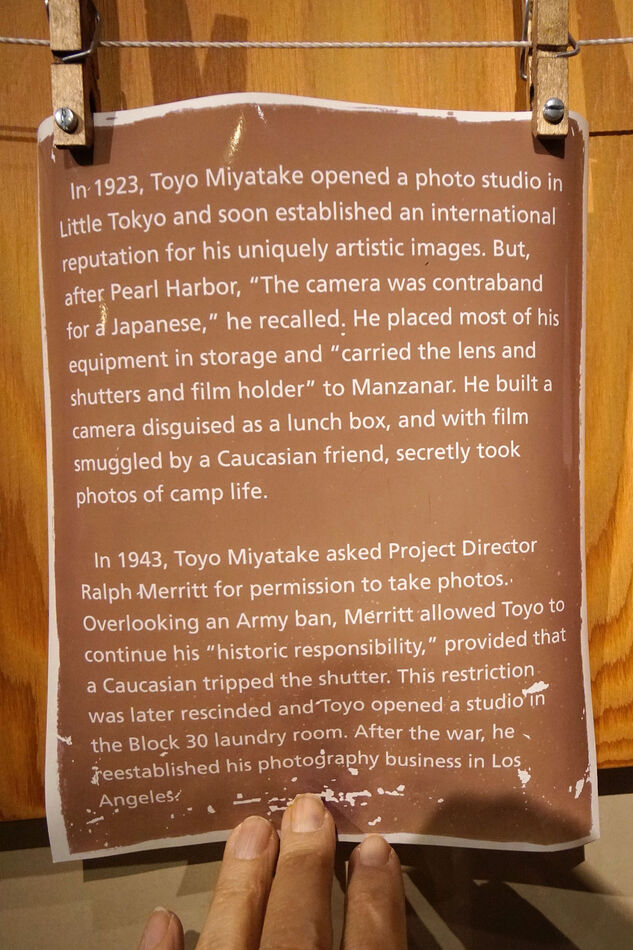
And a sample of some of the photos that he took - January 2023 - Sony a6500, 10-18mm
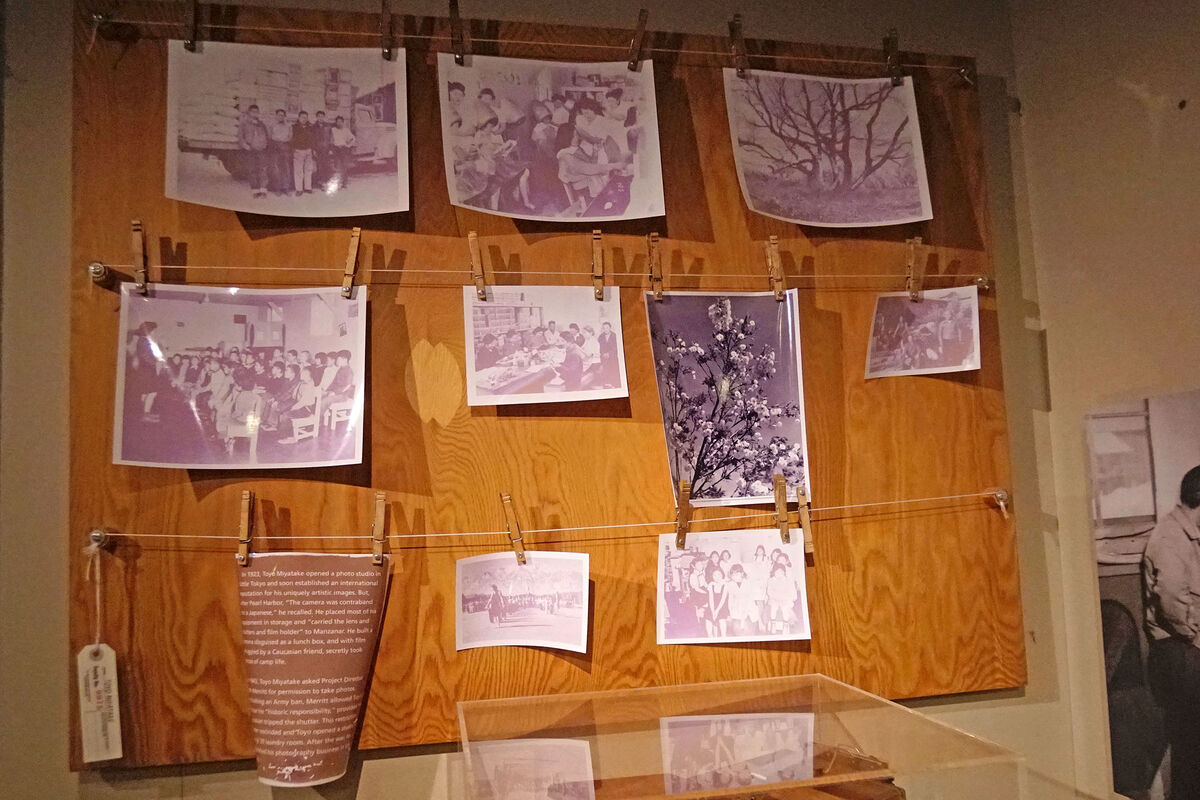
Apr 23, 2023 02:53:01 #
And here are photos of the only remaining structures on the site that have survived since the camp closed. As one would expect, due the harsh winter and summer conditions, the wooden buildings were all destroyed and removed years ago. Except for what you see below, virtually all of the buildings in the camp were constructed of wood.
This marks where the camp's cemetery was located. It was built by an internee who was a stonemason. He was Catholic but he was assisted by a group of young Buddhists, one of whom carved the inscriptions - January 2023 - Sony a6500, 18-135mm
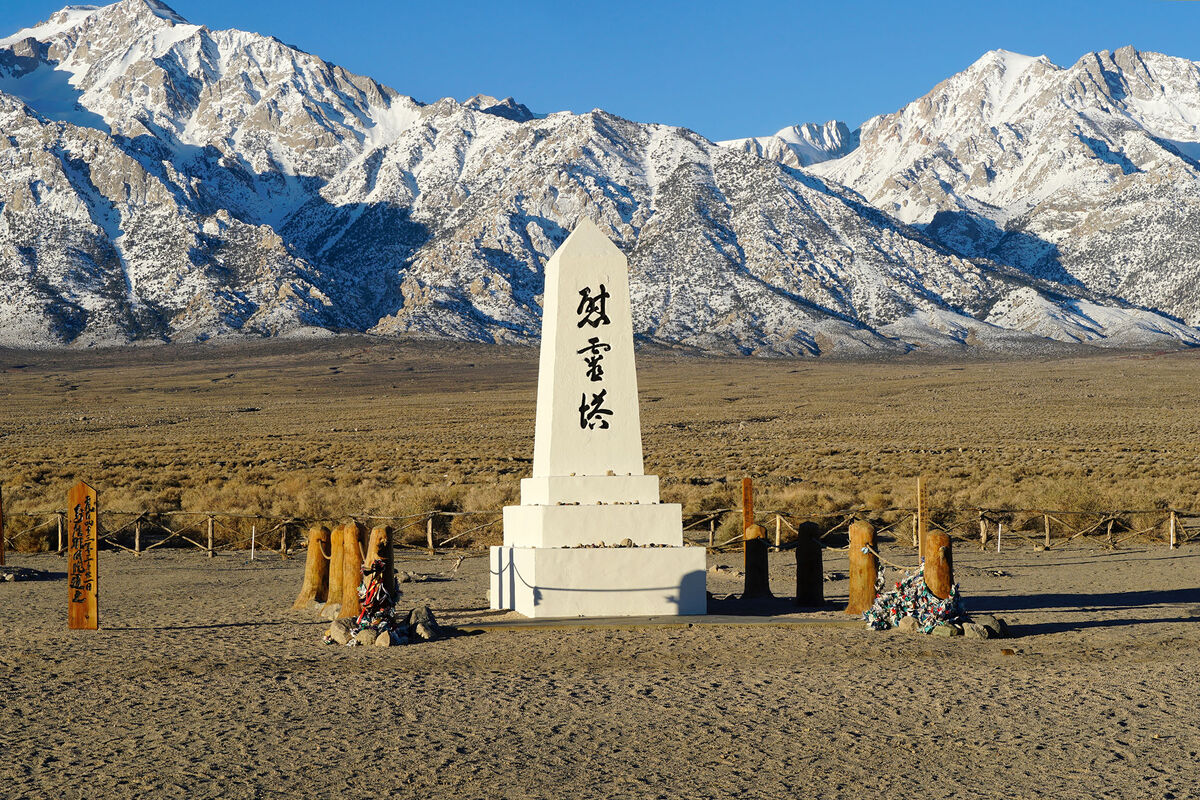
These are the original primary and secondary guard shacks at the entrance to the camp, which is no longer used as a new entrance was built when the historical site was established - January 2023 - Sony a6500, 18-135mm
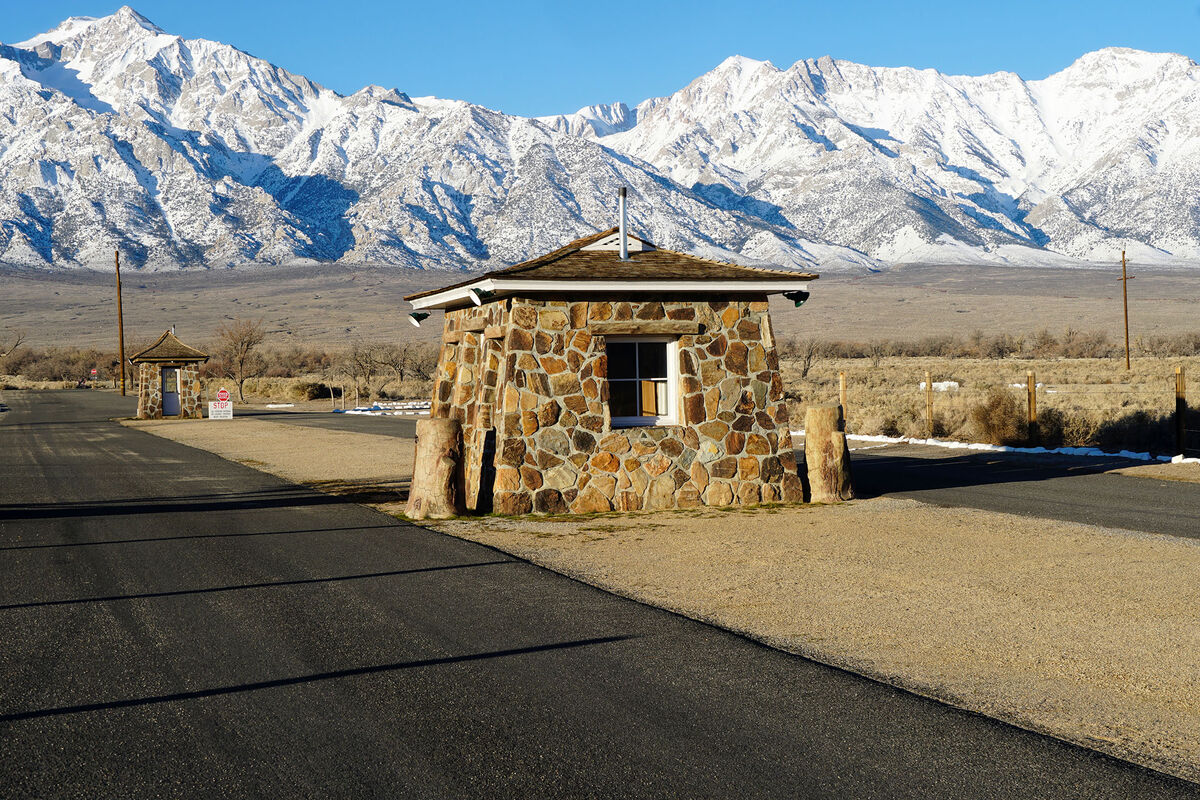
This is what the historical site looks like today, with the parking area in front of the 'auditorium' which was built in 1944 and which housed the theater and administrative offices - January 2023 - Sony a6500, 18-135mm
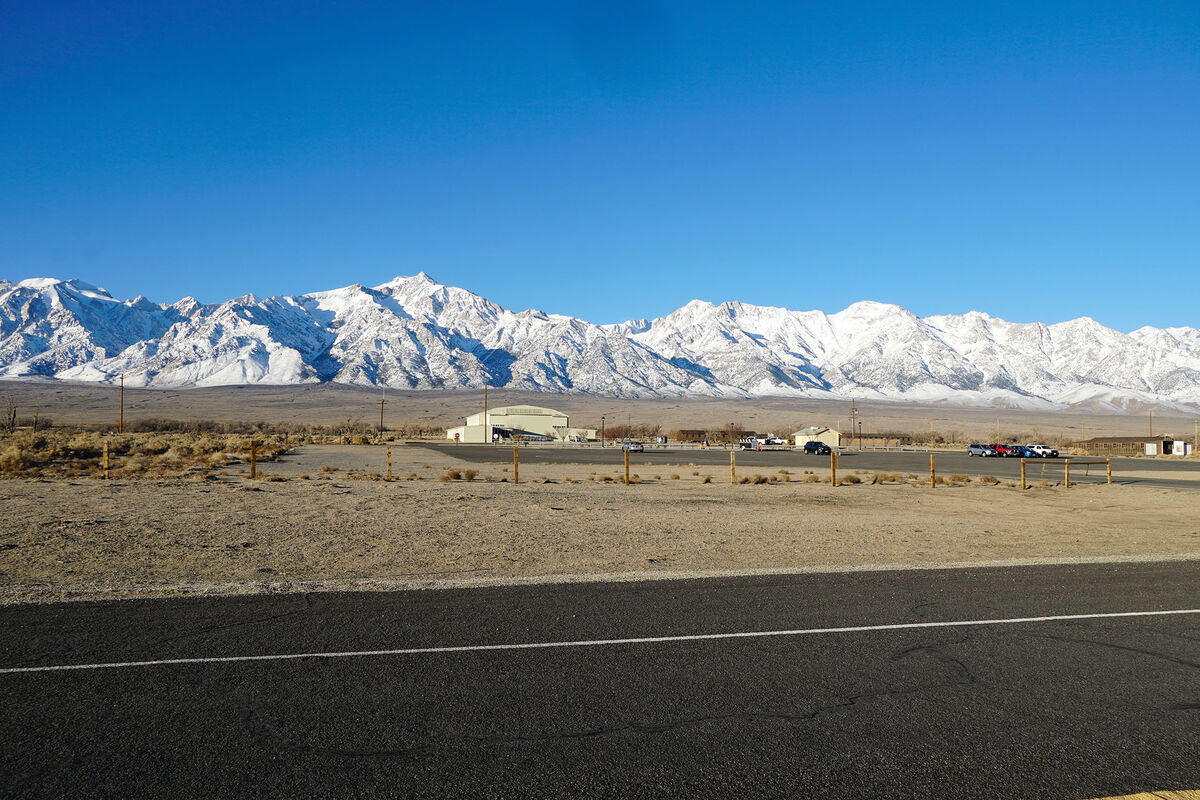
The original 'auditorium' now houses the museum and the National Park Service offices - January 2023 - Sony a6500, 18-135mm
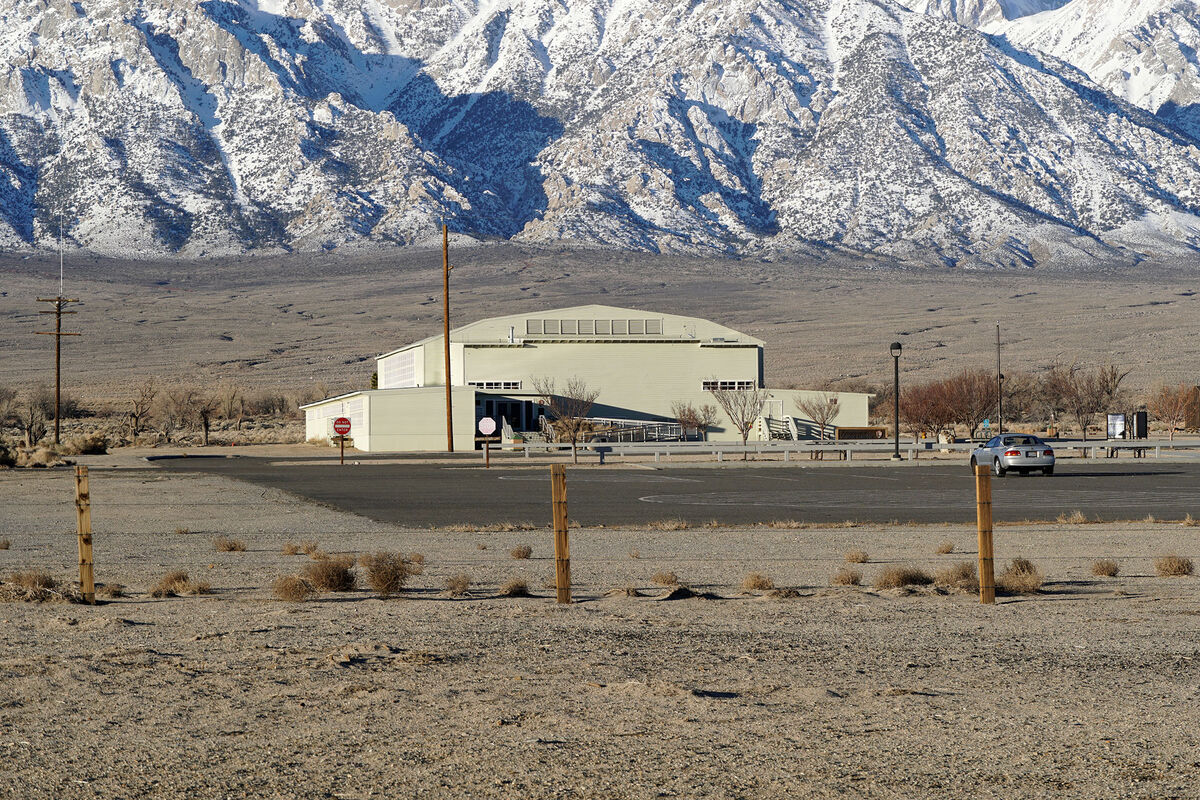
This is not an original structure but was erected to show how the camp was guarded. There were eight guard towers located around the barbed-wire perimeter fence, which was manned 24/7 by members of the US Army - January 2023 - Sony a6500, 18-135m
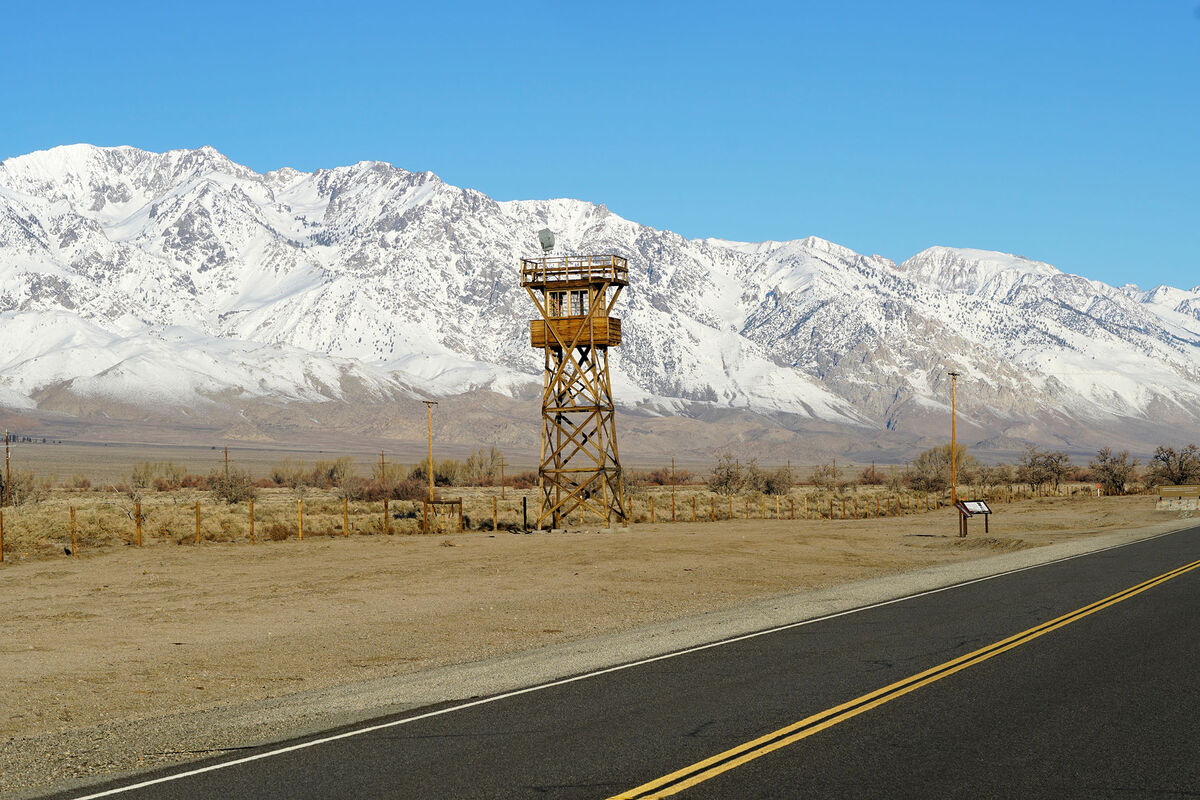
Apr 23, 2023 03:09:51 #
Apr 23, 2023 03:47:52 #
Now for that more detailed story about my boss and his family.
One of the things that I found amazing was that while I was talking to one of the Park Service employees, I mentioned that my old boss was Japanese-American and that his family had been displaced from Southern California but I wasn't sure where he and his family were sent. That's when I learned that they have a master database of ALL of the 120,000+ internees with details as to where they went and so on. I gave them my bosses name and where he was born. They were able to find his records and that's when I learned something about what happened when the order was issued requiring people of Japanese decent to leave the West Coast area and were moved to one of the 10 interment camps. Now it turns out that my boss and his family were technically never interned at one of the camps. Note that I knew he hadn't been interned at Manzanar because my boss told me he had graduated from high school in Wyoming, but that was one the states where there was a camp, so I just assumed (like I said, he never talked much about that part of his life).
Anyway, it turns out that in January 1942, when the internment order was issued, people were given two weeks to report to a processing center. But, and this is what I had never knew before, if during those two weeks, a person voluntarily left the West Coast areas and moved to a state that would accept them, they were not subject to being interned. What appears to have happened is that Wyoming, before the war, had a rather substantial population of Japanese residents and since it was nowhere near anything strategic, the government never concerned themselves with this group, despite eventually establishing one of the smaller camps there. Well, it seems that my boss's father knew someone in Wyoming so they moved there and were never interned. Paul graduated from high school that spring (1942) and he enlisted in the Army as I had mentioned earlier, serving in Europe in the 442nd Infantry Regiment. When the war ended, he returned to Wyoming and attended engineering school on the GI Bill. Which is where he met his wife, who was also of Japanese decent, but who had been born and raised in Wyoming (I can remember Paul telling me that his father-in-law was a railroad engineer). After graduating, Paul went to work for a company in Chicago, which was eventually acquired by a British Company that had their American operation in Saginaw, Michigan. Paul was transferred there and eventually became one of the department heads and that was where I met him years later when I joined the company in 1971 and for awhile, worked in his department as a machine designer. It was interesting the data that they had, which only went up to when he left for the Army, but they were able to give me a copy of his draft registration, which he had to fill out when he turned 18, just a few months before he graduated. Of course, this registration card had the date and place of his birth as well as his address in Wyoming, which was in Laramie. That's when I also learned his Japanese middle name, which I had never heard before.
Now there's a twist to this story that involves Paul's older brother, who it turns out was interned during the war, but not here, but rather in Japan.
When Paul's brother graduated from high school a few years before Paul, the family sent him to Japan to live with an uncle who happened to be a Methodist minister. This was so that he would get a chance to learn his families culture and become proficient in the language. Of course, when war broke out he was immediately arrested since he was an American citizen, along with is uncle's family since he was part of the Christian-backed antiwar movement in Japan. They spent about three years in prison but were eventually released as it was get too hard to feed them, so they were released under house arrest for the duration, depending on their former parishioners for food and housing. Now when the war ended, here was this American young man who could speak the language and so he went to work for the occupation forces. He eventually married a Japanese girl and stayed in Japan, first working for Army and later, with the help of his uncle, getting a job in the church and eventually the World Council of Churches in their Tokyo offices, where he worked until he retired.
Now comes a bit more of the twist. I can remember when Paul and his wife would have their nieces and nephews from Japan come and stay with them for a year or so to learn about their American heritage since they were American citizens. This also gave them a chance to prefect their English language skills. In fact, I think at least one of these kids stayed and went to school in the US and never returned to Japan.
Anyway, I thought some of you might enjoy this story.
One of the things that I found amazing was that while I was talking to one of the Park Service employees, I mentioned that my old boss was Japanese-American and that his family had been displaced from Southern California but I wasn't sure where he and his family were sent. That's when I learned that they have a master database of ALL of the 120,000+ internees with details as to where they went and so on. I gave them my bosses name and where he was born. They were able to find his records and that's when I learned something about what happened when the order was issued requiring people of Japanese decent to leave the West Coast area and were moved to one of the 10 interment camps. Now it turns out that my boss and his family were technically never interned at one of the camps. Note that I knew he hadn't been interned at Manzanar because my boss told me he had graduated from high school in Wyoming, but that was one the states where there was a camp, so I just assumed (like I said, he never talked much about that part of his life).
Anyway, it turns out that in January 1942, when the internment order was issued, people were given two weeks to report to a processing center. But, and this is what I had never knew before, if during those two weeks, a person voluntarily left the West Coast areas and moved to a state that would accept them, they were not subject to being interned. What appears to have happened is that Wyoming, before the war, had a rather substantial population of Japanese residents and since it was nowhere near anything strategic, the government never concerned themselves with this group, despite eventually establishing one of the smaller camps there. Well, it seems that my boss's father knew someone in Wyoming so they moved there and were never interned. Paul graduated from high school that spring (1942) and he enlisted in the Army as I had mentioned earlier, serving in Europe in the 442nd Infantry Regiment. When the war ended, he returned to Wyoming and attended engineering school on the GI Bill. Which is where he met his wife, who was also of Japanese decent, but who had been born and raised in Wyoming (I can remember Paul telling me that his father-in-law was a railroad engineer). After graduating, Paul went to work for a company in Chicago, which was eventually acquired by a British Company that had their American operation in Saginaw, Michigan. Paul was transferred there and eventually became one of the department heads and that was where I met him years later when I joined the company in 1971 and for awhile, worked in his department as a machine designer. It was interesting the data that they had, which only went up to when he left for the Army, but they were able to give me a copy of his draft registration, which he had to fill out when he turned 18, just a few months before he graduated. Of course, this registration card had the date and place of his birth as well as his address in Wyoming, which was in Laramie. That's when I also learned his Japanese middle name, which I had never heard before.
Now there's a twist to this story that involves Paul's older brother, who it turns out was interned during the war, but not here, but rather in Japan.
When Paul's brother graduated from high school a few years before Paul, the family sent him to Japan to live with an uncle who happened to be a Methodist minister. This was so that he would get a chance to learn his families culture and become proficient in the language. Of course, when war broke out he was immediately arrested since he was an American citizen, along with is uncle's family since he was part of the Christian-backed antiwar movement in Japan. They spent about three years in prison but were eventually released as it was get too hard to feed them, so they were released under house arrest for the duration, depending on their former parishioners for food and housing. Now when the war ended, here was this American young man who could speak the language and so he went to work for the occupation forces. He eventually married a Japanese girl and stayed in Japan, first working for Army and later, with the help of his uncle, getting a job in the church and eventually the World Council of Churches in their Tokyo offices, where he worked until he retired.
Now comes a bit more of the twist. I can remember when Paul and his wife would have their nieces and nephews from Japan come and stay with them for a year or so to learn about their American heritage since they were American citizens. This also gave them a chance to prefect their English language skills. In fact, I think at least one of these kids stayed and went to school in the US and never returned to Japan.
Anyway, I thought some of you might enjoy this story.
Apr 23, 2023 06:01:17 #
Apr 23, 2023 06:23:08 #
Internment camp? Looks like a POW camp. So much for our constitutional freedoms if you happen to be of a different ethnicity.
Apr 23, 2023 06:25:02 #
Apr 23, 2023 06:37:59 #
Tdearing
Loc: Rockport, TX
Thank you for taking the effort to compose this informative posting. I studied this unfortunate chapter as a Political Science major, which now has been quite some time ago and it is worth remembering.
Apr 23, 2023 06:38:35 #
I visited Manzanar and Lone Pine (where the fabulous Alabama Hills are) a couple of years ago. I'm glad this shameful part of America's past hasn't been buried, but has been turned into a bit of a somber memorial. These days, the past is being ignored or "re-imagined" and this is a stark reminder that there is ugliness in man everywhere.
The re-creation is incomplete, in my opinion. I walked around the camp and was struck by the Japanese "garden" that has been partially rebuilt. According to the National Trust for Historic Preservation, over 100 such rock gardens existed at one time, demonstrating the resilience and resistance of the interned. Thanks for the memories! More people should visit this area!
The re-creation is incomplete, in my opinion. I walked around the camp and was struck by the Japanese "garden" that has been partially rebuilt. According to the National Trust for Historic Preservation, over 100 such rock gardens existed at one time, demonstrating the resilience and resistance of the interned. Thanks for the memories! More people should visit this area!
Apr 23, 2023 07:10:39 #
Apr 23, 2023 07:12:14 #
Thanks for posting. While I certainly knew about this ignoble bit of our history, you’ve added both images and information that is fascinating. The part about relocating inland is most interesting as it shows at least a modicum of compassion.
Apr 23, 2023 07:45:48 #
OldCADuser wrote:
And here are photos of the only remaining structures on the site that have survived since the camp closed. As one would expect, due the harsh winter and summer conditions, the wooden buildings were all destroyed and removed years ago. Except for what you see below, virtually all of the buildings in the camp were constructed of wood.
Thank you for posting this short history of the USA's second-most shameful "moment." The photos are very good as well!
Apr 23, 2023 08:01:45 #
Apr 23, 2023 08:41:45 #
OldCADuser wrote:
And here are photos of the only remaining structures on the site that have survived since the camp closed. As one would expect, due the harsh winter and summer conditions, the wooden buildings were all destroyed and removed years ago. Except for what you see below, virtually all of the buildings in the camp were constructed of wood.
Thanks for the photos and the great story. While I think the US was wrong in what they did to the Japanese during WWII, at least they were treated humanely and allowed freedoms like the photographer. In many other countries citizens were executed or made to do forced labor. Look at how the Germans treated the Jews -- before the death camps, many were made to do slave labor. Other countries like Cambodia simply killed off large portions of the population they felt did not comply with their governmental policies. Some people point out that Germans were not treated the same way but how would they have identified Germans? Walking down the street, can you pick out a person of German descent from one from England, France, or other Caucasian countries? Besides, the internment would have required millions rather than 120,000 since a large portion of the US can trace their ancestry back to Germany.
If you want to reply, then register here. Registration is free and your account is created instantly, so you can post right away.
